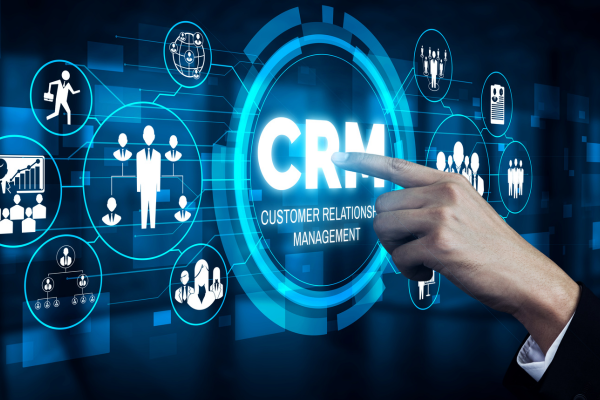Customer data is considered the key for businesses to collect and approach potential customers. Therefore, possessing a high-quality data source plays an incredibly important role for most businesses. A good data set not only enhances marketing effectiveness but also optimizes costs. So, how can you collect a quality data source? Let’s explore 5 ways to collect customer data with Halink Software in the article below!
What is customer data? The role of customer data for businesses
Customer data (customer information) is a collection of stored information related to customers such as name, age, phone number, address, etc. Businesses collect customer data and collect these details to better understand their target audience, thereby devising effective marketing and outreach strategies.
The role of customer data for businesses:
It’s not by chance that many businesses prioritize collecting customer data. Basically, customer data plays an extremely important role:
– Understanding customers to approach the right audience in the right way.
– Personalizing customer experiences better.
– Contributing to effective strategy formulation.
– Increasing marketing and sales effectiveness.
– Helping predict market demand to respond better.
– Building customer relationships and loyalty.
– Serving as a premise for developing new products/services.
– Optimizing costs, avoiding wasted resources on ineffective strategies.

5 ways to collect quality customer data
In today’s era, collecting customer data is not difficult. However, to collect a quality data source, you can refer to the following 5 methods:
1. Collect customer data with websites
A website is not only a place to introduce products and businesses but also an effective tool for data collection.
How to collect customer data with websites:
– Use survey forms or account registration.
– Collect customer data in forums, comment sections, reviews, etc.
– Analyze customer behavior through website analytics tools.
Advantages:
– Low cost, utilizing existing website tools.
– Data is updated instantly as customers interact.
– Easy to analyze based on available forms.
– Forms and websites can be adjusted to collect necessary data.
Disadvantages:
– Low coverage, only able to collect data when customers visit the website.
– Access data has many limitations.

2. Use social media to collect customer data
Nowadays, social media is extremely popular. This is also a place where businesses can collect customer data of high quality.
How to collect customer data on social media:
– Interact with customers through comments, messages, etc.
– Organize mini-games, surveys, and events to encourage participation.
– Use social media analytics tools to analyze and track customer behavior.
Advantages:
– Reaches a large and diverse user base in a short time.
– Data is updated instantly, allowing direct interaction with customers.
– Most social media platforms have tools to support collecting customer data.
Disadvantages:
– Data is scattered and difficult to manage centrally.
– Often time-consuming due to monitoring and interacting with customers.
– Quality is relatively good and requires careful filtering.

3. Through trade marketing
This is a way to collect customer data through direct marketing activities at points of sale, stores, or distribution channels. This method is often applied by large businesses with direct dealers, retailers, and distributors.
How to collect customer data through trade marketing:
– Conduct surveys and direct interactions at points of sale.
– Through events, loyalty programs, etc.
– POS systems analyze transaction data and shopping behavior from point-of-sale systems.
Advantages:
– Collected data is highly accurate and reaches many potential customers.
– Receives immediate feedback.
– Creates a premise for building relationships with customers.
Disadvantages:
– High cost, often requiring significant budget and human resources.
– Collected data may be inconsistent or affected by external factors.
– Time-consuming for surveying.

4. Through event organization to collect customer data
Events and seminars often gather many high-quality customer segments. This is an ideal place for businesses to collect customer data and collect quality data, especially for business customers.
How to collect customer data through events:
– Exchange business cards and contact information.
– Through registration and check-in at events and seminars.
– Appropriate surveys can be created to collect desired data.
Advantages:
– Customer data is often extremely high quality.
– Real-time data collection.
– In addition to collecting data, it can also build relationships with many customers.
Disadvantages:
– High costs for organizing events and seminars.
– Requires businesses to have good preparation and resources.
– Often limited in reach according to the event’s scale.

5. Leveraging CRM
CRM systems are often known for their role in managing existing customers. However, if exploited correctly, this is also an effective tool for finding customer data and collecting it. This can be done by synthesizing and analyzing stored customer information, thereby identifying potential customers for further exploitation.
Advantages:
– Data is centrally managed and clearly categorized.
– Deep data analysis to collect potential customer insights.
– Supports building smart customer care and outreach strategies.
– Integrates with many other platforms to expand the customer base.
Disadvantages:
– Relatively high investment cost compared to other solutions.
– Requires expertise in software operation.
– Heavily dependent on the accuracy of input data.

If you are looking for a unit to develop a quality CRM system, Halink Software is an excellent candidate. With over 11 years of experience in custom software development, Halink Software will help you develop a CRM system that meets your customized needs at the most optimal cost. Contact our hotline at 1800 6319 for consultation and the best quote!
The above are 5 ways to collect customer data of high quality. Depending on the needs, characteristics, and capabilities of the business, choose the appropriate method. If you have any questions or want to share more related knowledge, don’t hesitate to share them in the comment section!




